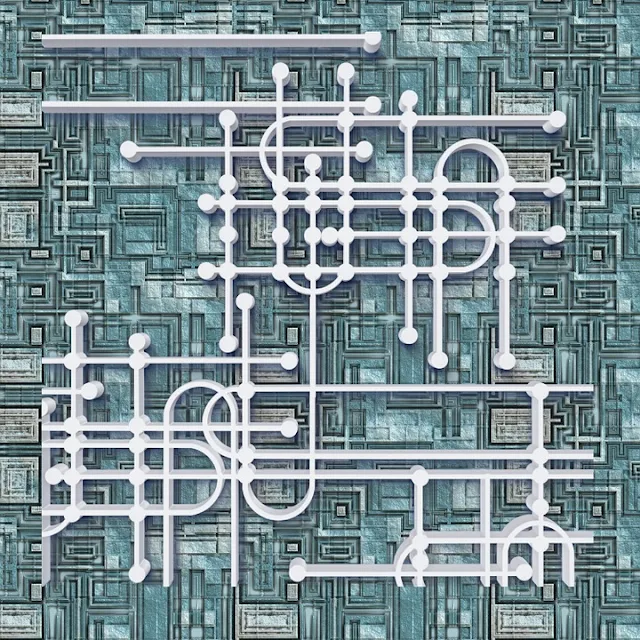Ad Code
Translate
Smart strategies for trading on crypto exchanges
October 20, 2025
Five Do’s For a Healthy Turnover That Bolsters Talent-Retention
October 20, 2025
Discover Honeybee Pharmacy (2025 Guide Important Consumer Tips)
October 14, 2025
What is Ozempic (semaglutide)? (Updated in 2025)
January 30, 2025
Posture Bra: Improving Back Support and Comfort
October 20, 2025
How To Find Suitable Properties In Cyprus?
October 20, 2025
10 Effective Strategies to Improve Domain Authority of Your Website
October 20, 2025
How ICS (Industrial Control System) Protects Against Cybersecurity Threats
Zizo Gala-Mkhize
October 11, 2021
Threat: Malware And Viruses
Malware is an unwanted malicious program that infects a computer with the intention of either stealing data or corrupting it. It is different from other programs that run as expected, such as anti-virus software, because it aims to harm the computer, whether by deleting files or installing something else without user consent. Malware can also be installed through removable storage devices such as USB drives and CDs since they are not scanned before being inserted into a computer. The ICS is designed to defend against such threats by blocking all data transfer on the port used by USB and CD-ROM.Threat: Denial Of Service
A denial of service or DoS attack is a cyber-attack that prevents legitimate users from accessing our network services. The goal is to disrupt the victim's ability to function properly by blocking their access to a service or resource, usually one connected to the internet. To launch a DoS attack, the attacker uses special software or Internet botnet, which floods a particular resource with more requests than it can handle from legitimate users. The ICS protects denial of services by implementing security measures, such as firewalls, anti-spam systems, intrusion detection, and intrusion prevention systems.Threat: Compromised Or Malicious Code
Compromised code can be defined as a set of instructions, which is designed to change the behaviour of the program and gain unauthorized access for the attacker. The end result is that if an attacker gains access to a compromised code, they can use it to steal information such as passwords and install more malware on the computer. A key step in this process is called "obfuscation," which seeks to hide malicious functionality from anti-malware tools so that they do not detect it.ICS is designed to prevent unauthorized access of the device used in critical infrastructure. The ICS uses a combination of software or hardware-based mechanisms for incorporating security components into the system. These mechanisms attempt to prevent cyber attacks on systems by protecting them from malware, adware, spyware, and viruses.
Threat: Unauthorized Access To ICS
Man-in-the-middle attacks or "phishing" are possible when attackers use false information to insert themselves into trusted communication channels and then intercept sensitive information. This is often used by attackers to gain high-level access to critical infrastructure. The ICS is designed to use data encryption during its communication with the field devices, reducing the risk of manipulation and unauthorized access.Threat: Vulnerability In ICS
It includes vulnerabilities like buffer overflows, session hijacking, and remote code execution attacks exploiting weaknesses such as using an unpatched server software which is known to have a high number of security holes. Vulnerabilities often come from the device vendors, e.g., microprocessors of the computer and the equipment manufacturers, e.g., IPS, VMS, and firewalls.However, the most common vulnerabilities are flaws in the code, which gives attackers the ability to modify the data, giving it access to unauthorized information. The ICS is designed to avoid these security issues by using a firewall at remote access points and secure web servers on the internal network. It uses secure mechanisms for remote access and encryption of data transferred through networks.
ICS helps to prevent cyber attacks against critical infrastructure, which are managed with the help of computers. It is designed to be secure by using security services, e.g., encryption and intrusion prevention systems. The ICS also prevents unauthorized access to the network used for ICS control, thereby helping to protect it from cyber-attacks, making it a highly critical part of a cyber-attack defence strategy.
Featured Post
DL Mining Launches Ethereum Contract Participation Service, Helping Users Earn $2K Stable Daily Returns
Zizo Gala-Mkhize-
October 20, 2025
Soapie Teasers
Sister Sites
Most Popular
List of 6,000+ Dofollow Commentluv Blogs FREE (Updated 2025)
January 16, 2025
Five Do’s For a Healthy Turnover That Bolsters Talent-Retention
October 20, 2025
How To Choose The Right Place For A Winter Campsite
March 06, 2023
Popular posts
List of 6,000+ Dofollow Commentluv Blogs FREE (Updated 2025)
January 16, 2025
Five Do’s For a Healthy Turnover That Bolsters Talent-Retention
October 20, 2025
Discover Honeybee Pharmacy (2025 Guide Important Consumer Tips)
October 14, 2025
Footer Menu Widget
Created By Blogspot Theme | Distributed By Gooyaabi Templates


Social Plugin